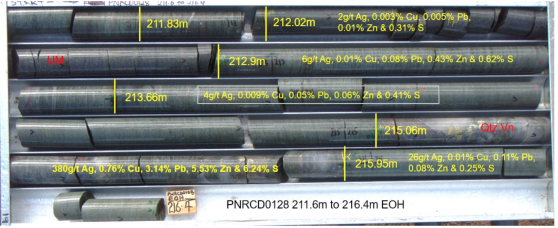A multi-commodity assessment by Poseidon Nickel Ltd (ASX:POS, OTC:PSDNF) of its Windarra Project in the Mt Margaret Goldfields of Western Australia has identified promising gold in soil anomalies in addition to recently identified nickel sulphide channels.
The geological assessment of the 10-kilometre northern section of Windarra identified two new high-priority embayed basal contact channel structures. The review, undertaken by Muller Geological Services Consultancy (MGSC) in conjunction with Poseidon’s geologists, had an initial focus on nickel.
This was then extended to consider other commodities that have previously presented interesting exploration results and required further investigation. The assessment has enhanced the significance of previously identified gold in soil anomalies and polymetallic high-grade lead-zinc-silver mineralisation.
The gold in soil anomalies established from limited historic programs are interpreted to be along strike of a regional major mineralised gold trend which follows the margins of a large granitoid intrusive that appears to control the nearby Lancefield and Beasley Creek gold camps.
Nickel sulphide channels that could host a new nickel sulphide deposit close to surface were recently reported, with high-grade polymetallic lead-zinc-silver hydrothermal vein-hosted mineralisation identified in several historical drill holes. The best results included 1.6 metres at 38.38 g/t silver, 2.56% lead and 3.77% zinc from 687.7 metres.
Investigation of the multi-commodity potential of Windarra was made possible by the 2022 termination of the 'Poseidon Nickel State Agreement Act 1971', which only permitted the mining of nickel ores. This agreement had been a key deterrent to carrying out sustained exploration for other commodities over a 50-year period.
Windarra high-grade lead-zinc-silver intersection.
“Gold and lead-zinc-silver opportunities”
Poseidon Nickel CEO Brendan Shalders said: “After several years of negotiation with the WA State Government, the Poseidon Nickel State Agreement Act 1971 was terminated in early 2022 and the Windarra tenure was transitioned to mining leases.
"This has opened up significant opportunities at Windarra as the company obtained the right to mine and treat tailings for any metal, not just nickel, subject to normal permitting conditions.
“Extending the recent northern Windarra geological assessment which has identified several high-quality nickel targets, to evaluate other commodities, the company has identified exciting gold in soil anomalies.
"Soil sampling conducted during 2010 initially identified these gold anomalies, but only nickel results from the sampling program were reported.
“Building upon the previous program, the company has conducted additional regolith and structural mapping that has enhanced the potential of these anomalies with some promising gold targets being identified.
“These gold targets are interpreted to be along strike of the major mineralised regional gold trend, and on the western side of a large regional granitoid which has the Beasley Creek group of mines (total gold endowment of 1.2 million ounces) along its southern margin and the Lancefield group of mines (total gold endowment of over 4 million ounces) along the eastern margin.
“Further to the gold opportunity, historical high-grade lead-zinc-silver drill intersections have been re-rated as part of the multi-commodity assessment. The mineralisation in the drilling is consistent with other polymetallic vein-hosted lead-zinc-silver discoveries seen elsewhere in WA.
“The exciting gold and lead-zinc-silver opportunities are in addition to the two exciting new channel structures considered highly prospective for nickel mineralisation, reported in February 2024. These opportunities open Windarra up to potentially being a multi-commodity project.
"The company is very excited by the exploration potential at Windarra and is now planning to test these exploration targets.”
Looking ahead
The next steps for Poseidon at Windarra include a staged soil program, focusing on newly identified gold anomalies and nickel sulphide channels, (using modern-day technologies, assaying for a full range of elements across the portfolio) and shallow reconnaissance drilling.
Once results from the soil sampling program have been assessed, the company intends to progress planning for aircore and/or reverse circulation drilling programs to test the identified exploration targets.
Planning for heritage and regulatory approvals will commence immediately to expedite preparation for any future exploration drilling programs.
Read more on Proactive Investors AU
